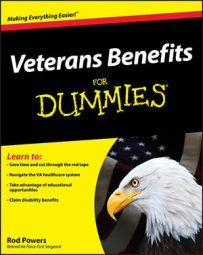The VA’s Vocational Rehabilitation and Employment (VR&E) Program helps veterans who have service-connected disabilities get and keep a job. The VR&E Program (Chapter 31) has placed vets in employment positions ranging from sales associate at the mega-superstore up the road to production manager at an international corporation.
The program is a result of a law enacted by Congress under Title 38, Code of Federal Regulations, Chapter 31. Because of this, the program is commonly referred to as the Chapter 31 Program.
The program offers a variety of services that can help fit you into the right job, including:
Interest and aptitude testing: Remember when you took the Armed Services Vocational Aptitude Battery (ASVAB) when you first joined the military? That test measured your aptitude for learning various military jobs. The VA offers a similar test that can tell you where your aptitude lies in civilian job fields. Who knows? Maybe you have the makings of an electronic engineer!
Occupational exploration: There are thousands of jobs out there in job land. The VA can help you explore those opportunities to determine what the qualifications are, where the jobs are located, how much they pay, and what particular fields have the greatest need.
Setting occupational goals: Sometimes you may know what kind of career you want, but you may not know how to get from here to there. The VA can help you establish a set of goals, ultimately leading to your dream job.
Locating the right type of training program: You may require additional training to qualify for your career choice. The VA can help you determine the training program that is best suited to your needs and capabilities. In some cases, the VA can even pay for your tuition and fees.
Exploring education and training facilities: After you know the type of training program you require, the next step is finding a school or training facility that offers what you need. The VA can help you locate schools that fit your budget, time, location, and capabilities to achieve your occupational goal.
Explore veterans eligibility for vocational rehabilitation and employment
Not all veterans are eligible for the VR&E (Chapter 31) program. In fact, you may meet the basic eligibility criteria but still not be entitled to benefits under the VR&E program. Even if the VA finds you’re entitled to other benefits under the program (such as resume development and other work readiness assistance), a counselor may decide you’re not entitled to vocational training or education.
Three factors determine whether you meet the basic eligibility requirements to participate in the VR&E program:
Service characterization: You must have been discharged (or will soon be discharged) from the military under circumstances that the VA doesn’t determine to be dishonorable.
Disability rating: The VA must have awarded you a disability rating of at least 10 percent. If you have not yet been discharged from the military, your expected disability rating must be at least 20 percent. Additionally, the disability must be service-connected (a result of your military service).
Time period: You have a limited time in which you can apply for benefits under the VR&E program. This is generally 12 years from the date the VA notified you that you had at least a 10 percent service-connected disability.
What a veteran is entitled to under VR&E
After you submit your application, you meet with a VA vocational rehabilitation counselor (VRC) who determines if you’re entitled to program benefits.
In order to be entitled to benefits, the VRC must find that you have at least a 20 percent service-connected disability with an employment handicap, or you have at least a 10 percent service-connected disability with a serious employment handicap. Here’s how the VA defines these two terms:
Employment handicap: This means your disability impairs your ability to get a job in the field where your interests, experience, and aptitudes lie. Your disability may not preclude you from all employment in this field, but it may limit advancements and promotions, or impact your ability to perform some tasks in the field.
Serious employment handicap: Your disability severely limits or completely prevents you from obtaining employment in the job field that you have experience, training, and aptitude in.
Unfortunately, there isn’t any go/no-go list that the VRC uses to establish your degree of employment handicap. Each and every case is evaluated on an individual basis. The VRC uses many individual factors, including the exact nature of the disability, your previous training and work experience, your interests and occupational goals, and so on, in establishing your degree of employment handicap.
Of course, like most VA programs, if you disagree with the VRC’s determination, you can file an appeal.
Although the VRC determines your degree of employment handicap, your disability rating and whether it’s service connected are established by the VA under a separate process.
Even if the VRC determines that you’re entitled to benefits under Chapter 31, he or she may determine that you don’t require education or vocational training programs to become employable. In that case, you’d be entitled to other benefits under the VR&E program, including vocational counseling, rehabilitation planning, and job referral services.
Apply for veterans vocational rehabilitation and employment (Chapter 31)
Unlike many other VA programs, you can’t apply online for Chapter 31 training benefits. You can, however, download VA Form 28-1900, Disabled Veterans Application for Vocational Rehabilitation, from the VA’s website.
After you complete the application, sign it and mail it to your nearest VA regional office. The VA will review your application and arrange for you to meet with a vocational rehabilitation counselor.
You can apply for the program while you’re still in the military. If you are pending medical discharge from the military for a condition that is reasonably expected to be 20 percent or more disabling, you can submit your application before discharge.

